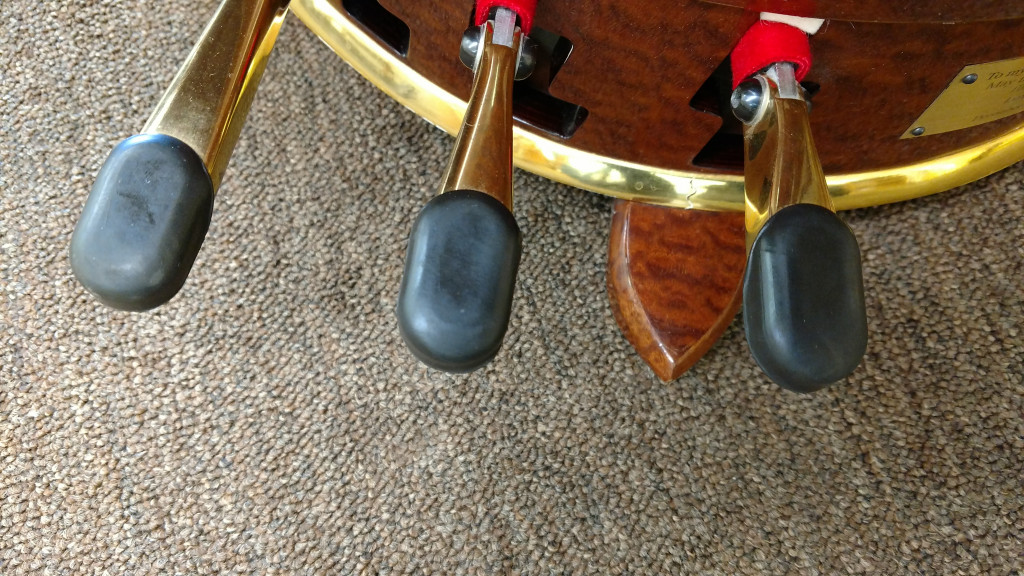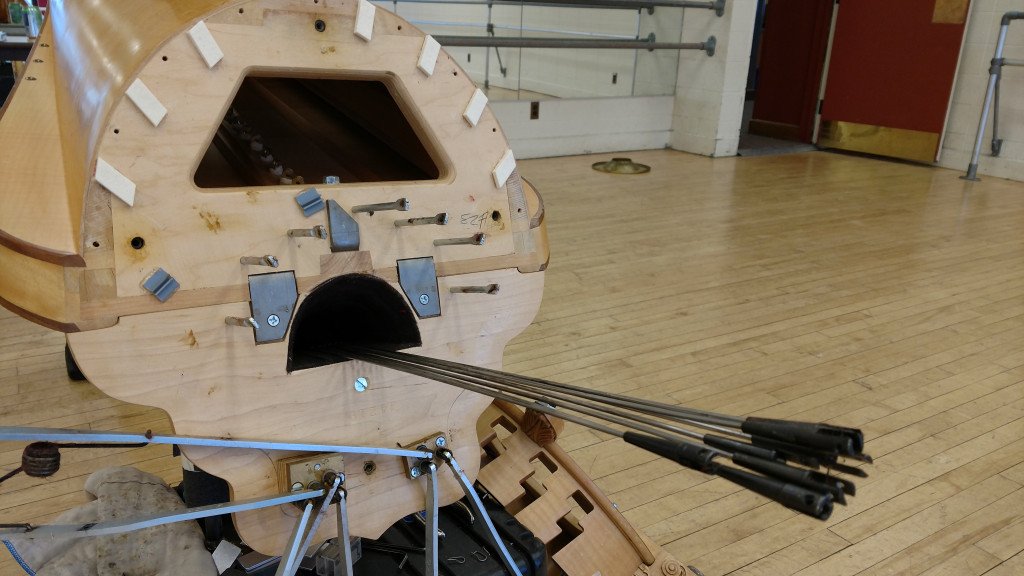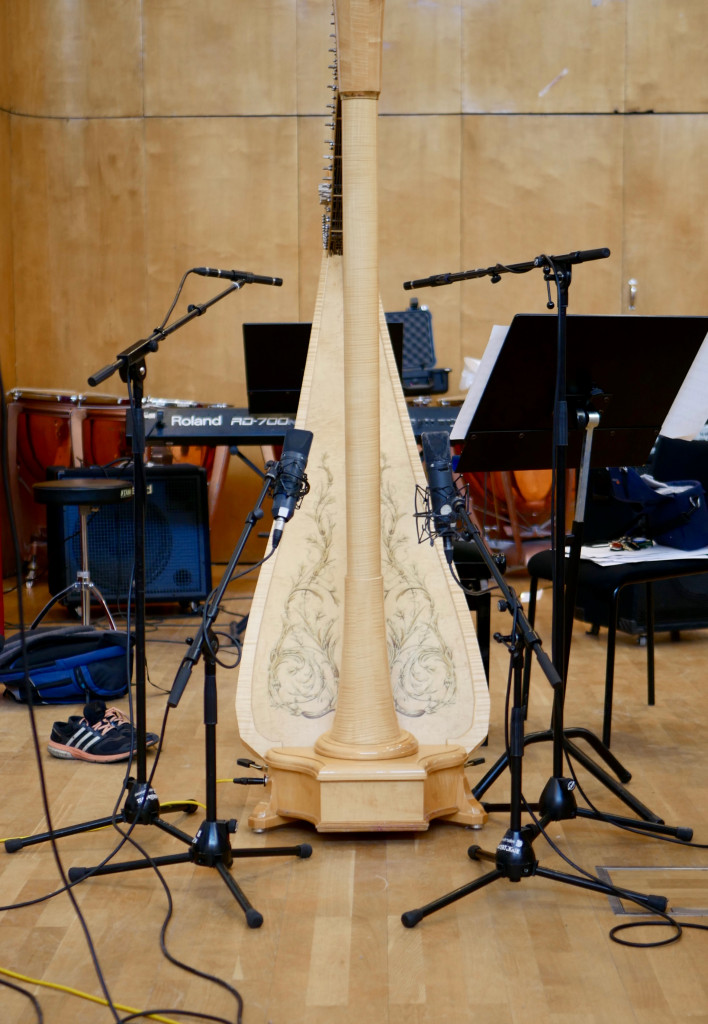Not long ago, the only things that could damage a harp in a house were humidity, children, pets, and clumsiness. Now, the modern harpist must contend with a new threat: the robot vacuum cleaner.
I love my robot vacuum cleaner: With two young children and a large, hairy dog, my Neato XV-21 vacuums every day so I don’t have to. I use that extra time to practice my harp.
Neato vacuums operate differently from most robot vacuums. Most brands run precise patterns to clean floors. The Neato employs a more human-like approach: it moves in a crisscross, random fashion. The Neato bumbles against furniture to clean the space around them as much as possible. After multiple encounters with our dining table, it’s obvious that the finish is lighter where the vacuum bumps it. I did not want my 12-year-young Blevins Espre 36 lever harp damaged, so I set out to find a solution.
First, I tried the magnetic strips that come with the Neato. Theoretically, placing them near objects will keep the robot from vacuuming there. However, they don’t work well, plus, they are a tripping hazard, and unsightly on hardwood floors, which I have. I needed something with sides to protect the harp from being bumped. I needed a fortress around my harp.
My thrifty husband found a shallow cardboard box that fit surprisingly well around the harp base. I was able to leave the harp in the box while playing and it was safe from the vacuum. It was an adequate solution.
However, the cardboard box was old and ugly. I was about to decorate it with colorful tape when my friend, Angie, stopped by to visit. She asked, “Why is your harp sitting in a cardboard box?” (Who wouldn’t ask?)
Since her robot vacuum is a valuable part of her household, she instantly understood why I needed a box. Angie mentioned that her husband, Chad, whose hobby is woodworking, wanted to try out a method of making boxes using finger joints. She thought he might be able to help. Thankfully, Chad decided my harp box would be a perfect trial project.
I gave him the cardboard box dimensions, and he suggested making the sides taller to accommodate the size cherry wood he was using. We were careful not to make the sides too tall so that I could still tilt the harp back to play while it remained in the box.
A few anxious weeks later, Angie brought over the finished box. It was beautiful! Chad did a wonderful job cutting and fitting the finger joints. Before I put it to use, I applied three coats of polyurethane to protect the wood and bring out the cherry tones. I also put felt pads on the bottom corners to prevent the box from scraping our wood floors.
Harp in a Box
When the finish dried and the box was ready to use, I carefully placed the harp inside, tilted it back, and began to play. Instantly, the notes crashed together in a reverberating echo—it was horrible. It took a few seconds for me to realize what was happening. Although it was now well protected, in effect, my harp now had two sound boxes. I had to find a way to stop the reverberations.

Since I did not notice this effect with the cardboard box, I knew that a box could work, so I thought insulation might help. I tried various configurations to mute the echo, but a layer of thick fleece over a cardboard bottom insert worked best. The sound is once again normal, the harp doesn’t slip, and it’s beautifully protected from the vacuum.
Get a Robot Vacuum, Protect Your Harp
A robotic vacuum cleaner is a great investment for a modern home, but if you have a harp, be mindful of its path. A cardboard box will safeguard your lever harp if you don’t have the expertise–or a very nice friend–to build a wooden one. Of course, with some clever decorating, it doesn’t have to look like a cardboard box at all.
How do you protect your instrument from robot vacuums?













